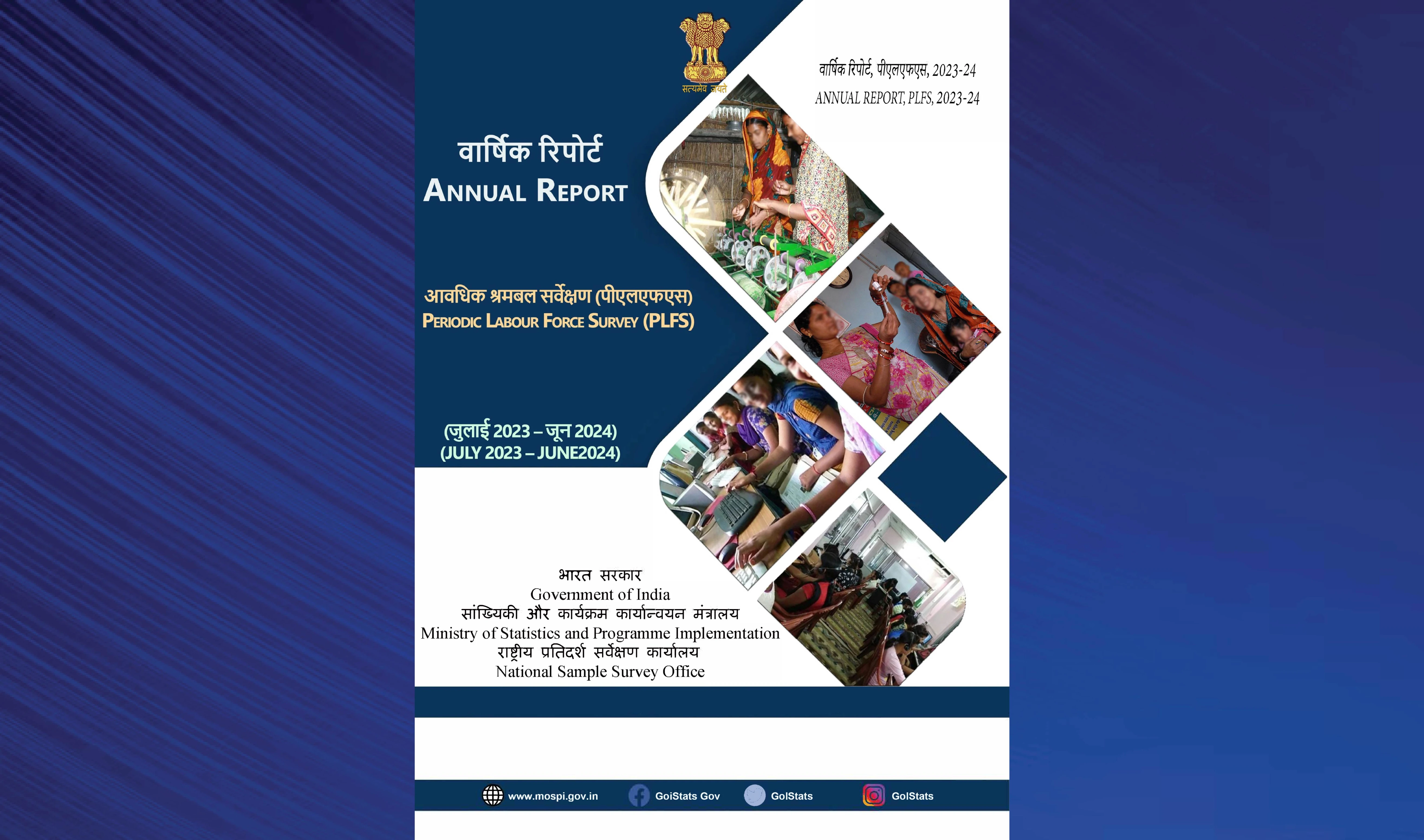Why in the News?
National Statistics Office (NSO) has revamped Periodic Labour Force Survey (PLFS) from January 2025.
About Periodic Labour Force Survey (PLFS)
- Conducting agency: National Statistics Office (NSO)
- Ministry: Introduced in 2017 by Ministry of Statistics and Programme Implementation
- Objectives:
- To estimate the key employment and unemployment indicators in the short time interval of three months for the urban areas only (Now rural area also included) in the 'Current Weekly Status' (CWS).
- To estimate employment and unemployment indicators in both 'Usual Status' (ps+ss) and CWS in both rural and urban areas annually.
- Key Terminologies used in PLFS
- Usual principal activity and usual subsidiary economic activity of a person taken together, is considered as the usual activity status of the person and is written as usual status (ps+ss).
- Labor Force Participation Rate (LFPR): It is defined as percentage of persons in labor force (i.e. Working or seeking or available for work) in the population.
- Worker Population Ratio (WPR): WPR is defined as the percentage of employed persons in population.
- Unemployment Rate (UR): UR is defined as percentage of persons unemployed among the persons in the labour force.
- Activity Status- The activity status of a person is determined on the basis of the activities pursued by the person during the specified reference period.
- Usual Status: When the activity status is determined on the basis of the reference period of last 365 days preceding the date of survey, it is known as the usual activity status of the person.
- Current Weekly Status (CWS): The activity status determined on basis of a reference period of last 7 days preceding date of survey is known as the current weekly status (CWS) of person.
- Current daily activity status (CDS): If on a day, a person 'had actually worked for 1 hour or more' accordingly he/she is given work status.

Key changes in PLFS Introduced:
- Availability of monthly estimates of key labour market indicators at the country level: Key employment and unemployment indicators on monthly basis for rural and urban areas in Current Weekly Status (CWS).
- First monthly bulletin of Periodic Labour Force Survey (PLFS) has been released.
- Extending quarterly estimates to rural areas in CWS: Previously PLFS provided quarterly labour market indicators for urban areas only; now it will be available for both rural and urban areas.
- Calendar year reporting: From year 2025, annual PLFS results will be based on calendar year i.e. survey period of January – December (July-June cycle previously) of a specific year in both usual status (ps+ss) and CWS.
- Enhanced sample size: 2.65 time increase in sample households to be covered in PLFS.
- Improved Geographical Representation: District has been made the primary geographical unit, called basic stratum within a state/UT separately for rural and urban sectors for selecting FSUs for most part of the geography covered.
- In the remaining parts National Sample Survey (NSS) region has been made the basic stratum.
- Improved social indicators data availability: Additional details about education; land possessed and land leased out; and households' usual monthly income from rent, pension, interest and remittances is now covered.
Other methodologies/Reports to compute Employment related indicators in India
|
Issues with methodologies to compute Employment related indicators in India
- Inconsistencies in data: This is mainly due to differences in sampling methods, survey timing, and the types of questions asked.
- Relaxed criteria: Current Weekly Status (CWS) counts individuals as employed if they worked ≥1 hour in the preceding week which often undercount unemployment.
- Unmatching definition: The Indian definition of employment does not meet international standards.
- Restrictive nature of Many Surveys: Quarterly Employment Survey (QES) is presenting employment data but maintained an absolute silence about the unemployment numbers.
- Inadequate sample size: India's workforce is around 60 crore and sample size of PLFS is only 2,72,304 households.
- Time lag, Poor Quality and Poor Response in Submission of Returns: Data is received after a considerable time lag.
Way forward
- Adopt definitions of United Nations System of National Accounts such as on informal sector, etc. on greater scale.
- International Labour Organisation (ILO) has urged India to follow the standards laid down by the 19th International Conference of Labour Statisticians.
- Leveraging AI to ensure data quality, data validation and processing can speed up processes and improve the quality of our statistics.
- There is a need to carry out enterprise surveys at a greater frequency.
- In addition, there is a need to carry out the Economic Census at regular intervals.
- Create a Central Server for All Government Data with uniform methodology
- Eliminate Duplication in Surveys and Harmonization of Reports: MoSPI, MoLE and other ministries collecting employment data should work together.
- Data accessibility and case for improved data visualization: The NSS could develop tools, fostering greater public awareness and engagement with statistical insights.
- Countries like Canada and the US have data storytelling portals with interactive maps and graphs for people to understand socio-economic trends.







